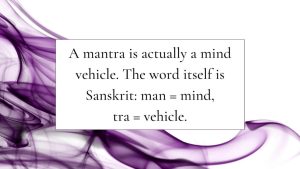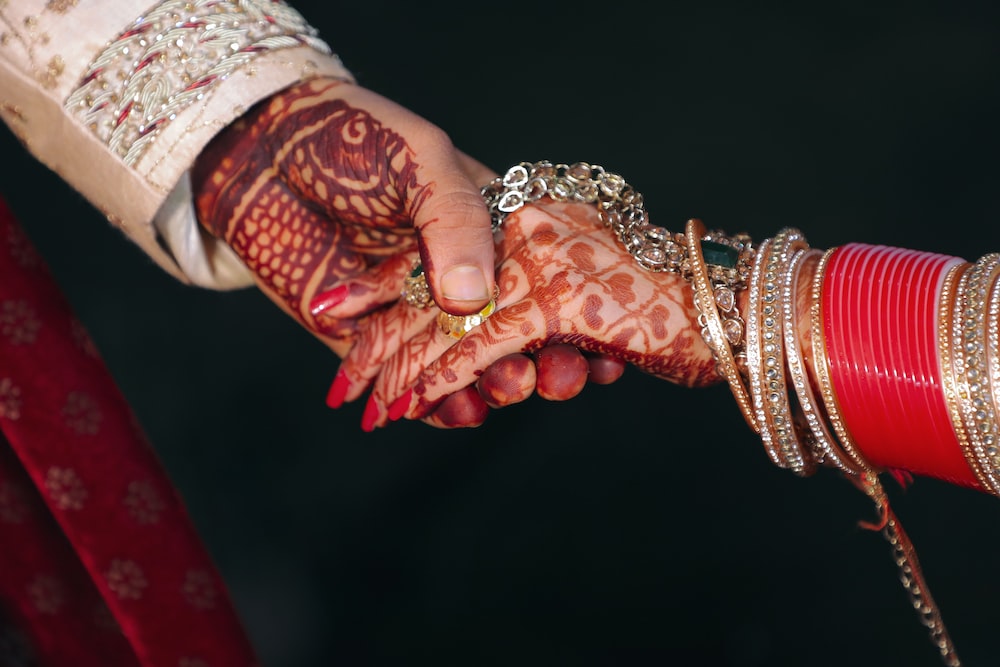A mantra is a sacred utterance, a numinous sound, a syllable, word or phonemes, or set of words in Sanskrit, Pali, and other languages that its practitioners believe to have magical, spiritual, or religious qualities (Sanskrit, romanized: mantra, /mntr/; Pali: manta). Some mantras have a literal meaning and a syntactic structure, while others do not.

The first mantras were written in Indian Vedic Sanskrit. The word “Aum” (sometimes spelled “Om”), which is thought to be the first sound to originate on earth, is used as a mantra in its most basic form. When the aum sound is made, a reverberation occurs in the body that promotes calmness in the body and mind. In more complex forms, mantras are musical expressions that express spiritual concepts like the human yearning for reality, light, immortality, serenity, love, wisdom, and action. Some mantras have spiritual significance and raise the spirit without having any literal meaning.

According to the school and philosophy of Hinduism, Buddhism, Jainism, and Sikhism, mantras are used in different ways and have different structures, functions, and types. The word Shingon implies mantra in the Japanese Shingon tradition.
In tantra, mantras play a crucial part. Mantras are regarded in this school as a very personal ritual and sacred formula that may only be used after initiation. Initiation is not required in other branches of Hinduism, Buddhism, Jainism, or Sikhism.
Etymology and origins
Mantra is a Sanskrit word that comes from the root man, which means “to think.”
Mantras are thought to have been used before 1000 BC, according to scholars. According to Frits Staal, mantras in Hinduism had evolved into a blend of art and science by the middle Vedic period (1000 BC to 500 BC).
The Japanese on’yomi reading of the Chinese is shingon, and the Chinese equivalent is, ; zhenyan; “genuine words” (which is also used as the proper name for the Shingon sect). Alex Wayman and Ryujun Tajima claim that “Zhenyan” (or “Shingon”) is the route of mantras, has the meaning of “an perfect mantra which discloses the truth of the dharmas,” and denotes “genuine speech.”
Bernfried Schlerath claims that the idea of styas mantras may be found in the Rigveda and Indo-Iranian Yasna 31.6, where it is referred to as poetic (religious) formulations that are linked to innate satisfaction.
History
Indianist Frits Staal claims that early Vedic poets were enamoured with the uplifting potential of poetry, metrical verses, and music. They were referred to by the root dhi-, which developed into the Hindu practise of dhyana (meditation), and the words used to initiate and support this process took the form of mantras. All vedic compositions were turned into mantras by the middle vedic period (1000 BC to 500 BC). For instance, they contained “c” (verses from the Rigveda), “sman” (musical chants from the Smaveda), “yajus” (a murmured phrase from the Yajurveda), and “nigada” (a loudly spoken yajus). Mantras expanded and changed in many ways during and after the time of the Hindu Epics to satisfy the desires and inclinations of diverse schools of Hinduism. One of Lord Shiva’s 1,008 titles is recorded as Mantra in the Linga Purana.










